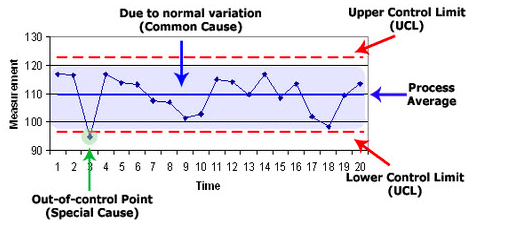KPIs with Control Charts
W. Edwards Deming popularized the use of Statistical Process Control as a means to improve quality. This method transformed Japanese industry into an industrial power after being completely destroyed after World War II.
opsZero implements Statistical Process Control and we use Control Charts to improve our processes as Quality is a part of our Principles.
We have certain goals with our KPIs (Key Performance Indicators):
- Conservative — We want our numbers to reflect reality.
- Consistent — All KPI charts should look the same with a 1 sigma control on both the Upper and Lower Limits.
- Charts should show “up and to the right” for any goal we set up.
- This makes it easy to see at a glance if we are attaining our goal.
- To achieve this, we use Control Charts, which track a process over time (average, Upper Control Limit, Lower Control Limit).

Control Limits are based on the standard deviation. The aim is to keep the process within its limits and gradually tighten them over time.
- A 3 sigma upper/lower limit may not be effective.
- Reducing variance to bring the average within 1 sigma or even 0.5 sigma may be ideal — depending on the process.

The nice thing about Control Charts is that they can be used for:
- Revenue goals
- Process goals
- Any measurable goal over time
This makes Control Charts a useful visualization across functions.
At opsZero, Control Charts are used for all at-a-glance KPIs to find patterns in how we are moving towards our targets. In addition, we use Pareto Charts to build products that reduce Support and Sales issues (covered in a future post).
